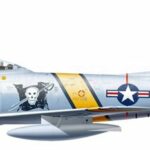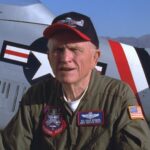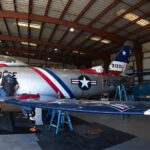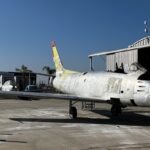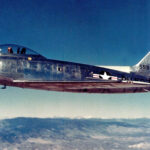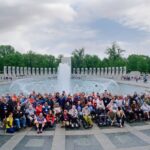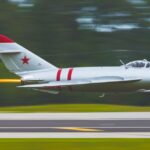Gate guardian airplanes are a unique and iconic feature of many military bases, museums, and aviation-related facilities worldwide. These aircraft, often retired from active service, are displayed prominently at the entrance or “gate” of these locations, serving as symbols of heritage, honor, and pride. Their presence is a tribute to the history and achievements of the aviation units they represent. Recently the contractors were hired to maintain and repaint the F-86 Sabre static display at Hanscom Air Force Base (AFB), MA. The aircraft, USAF #53-1353, has been on loan from the National Museum of the U.S. Air Force since April 1980 and receives a new paint job every five years.
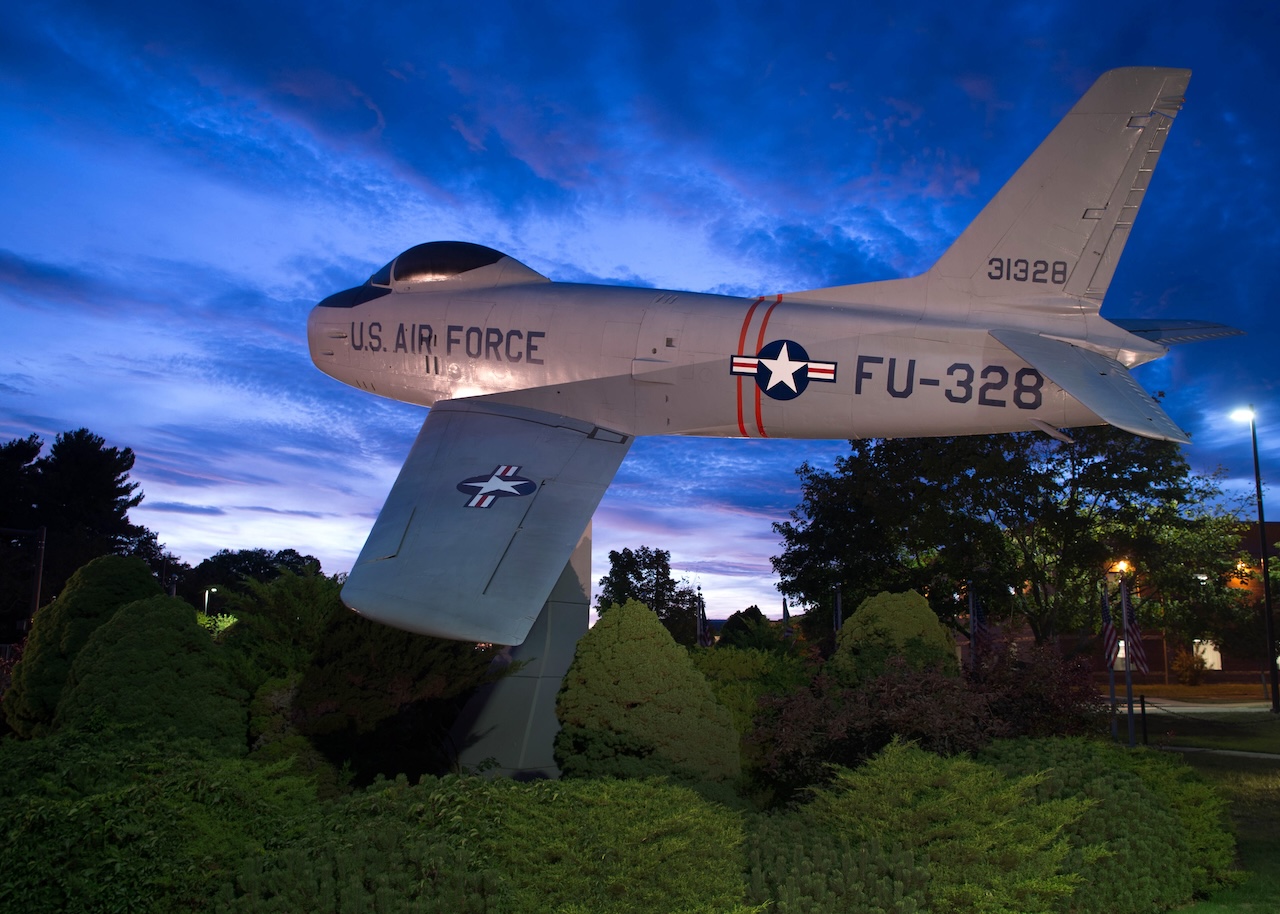
Hanscom AFB has a rich history that began as the United States was on the brink of entering World War II. In May 1941, the Massachusetts Legislature approved the purchase of a large tract of farmland near Bedford, Lincoln, Concord, and Lexington, to establish a Boston Auxiliary Airport. The federal government, allocating $40 million to build 250 new civil airports across the nation for future defense purposes, provided the funds for this project. In mid-1942, Massachusetts leased the Bedford airport to the War Department for the Army Air Forces. Fighter squadrons trained there in 1942 and 1943, including the 85th Fighter Squadron and the 318th Fighter Squadron, which trained on the Curtiss P-40 Warhawk and later fought in North Africa and Europe.
The airport was renamed Laurence G. Hanscom Field in February 1943, honoring a Massachusetts-born pilot and aviation enthusiast who had been a reporter for the Worcester Telegram-Gazette. Hanscom died in a plane crash in February 1941 while advocating for the airport’s establishment at Bedford. Later in WWII, Bedford Army Air Field became a site for testing new radar sets developed by MIT’s Radiation Laboratory, a secondary wartime activity that paved the way for the base’s postwar role.
Since 1945, Hanscom has evolved into the USAF’s center for developing and acquiring electronic systems, significantly contributing to the high-technology area around Route 128. Recognizing radar’s military importance during World War II, the Army Air Forces sought to continue radar, radio, and electronic research programs post-war by recruiting scientists and engineers from wartime laboratories. This led to the formation of the Air Force Cambridge Research Laboratories (AFCRL), which took over MIT’s test site at Hanscom Field. Today, Hanscom AFB’s mission program offices remain integral to the evolving electronics technology community in the Boston area, including educational institutions, private industry, and military research and development installations. The base continues its leadership role in developing and acquiring Air Force command and control systems.
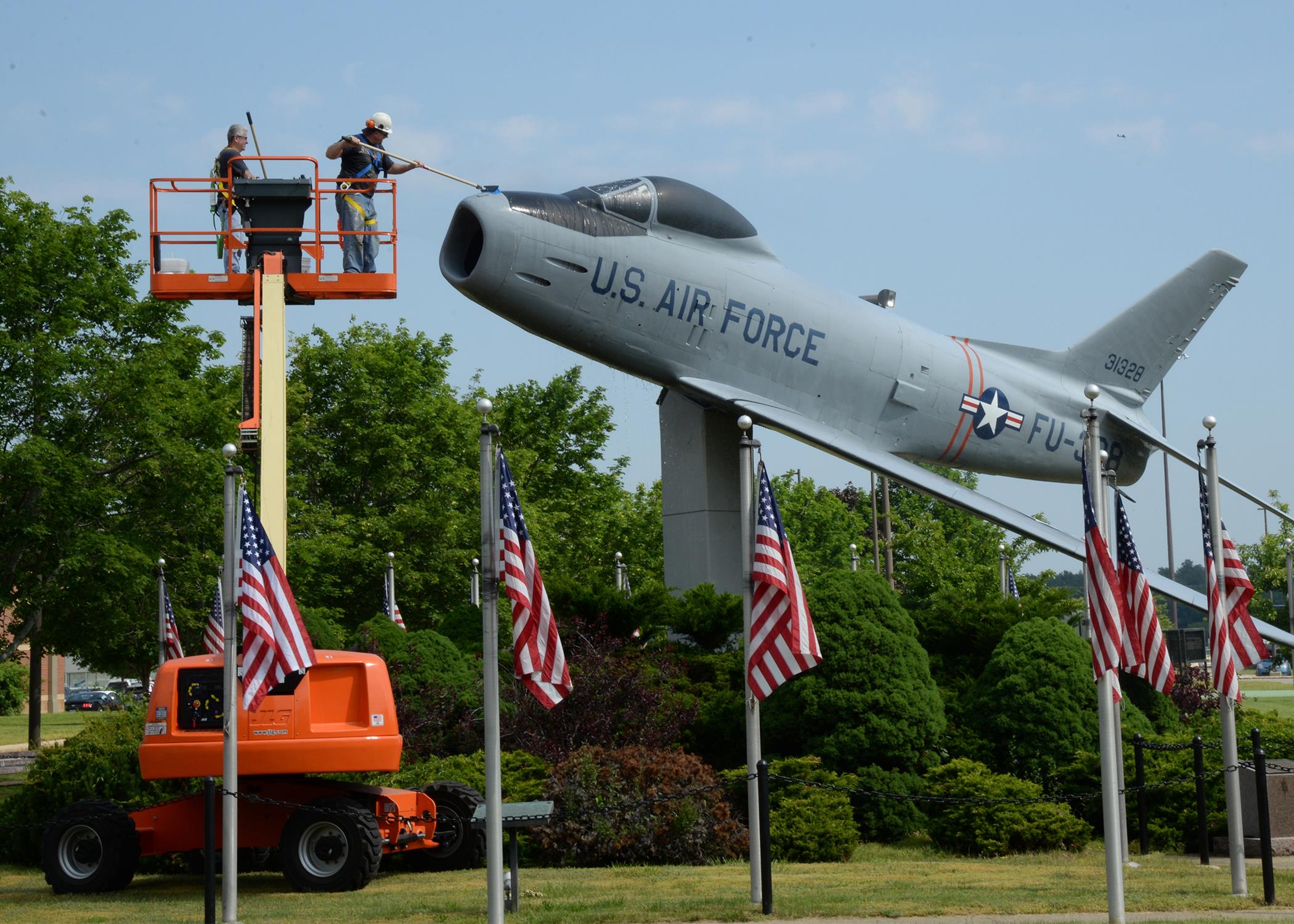









![Fargo Air Museum Hopes to Save F-86H 10 Sabre 53-1253 after being removed from the pole at Jamestown. [Photo via Maxwell Sabin]](https://vintageaviationnews.com/wp-content/uploads/Fargo-Air-Museum-Hopes-to-Save-F-86H_2-150x150.jpg)
